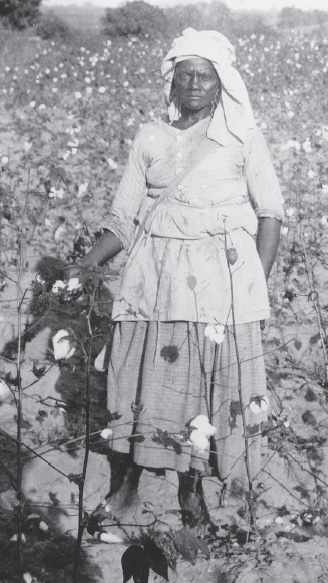1.4.3 White Landlords, Black Sharecroppers

Ex-slaves who wished to escape slave labor and ex-masters who wanted to reinstitute old ways clashed repeatedly. Except for having to pay subsistence wages, planters had not been required to offer many concessions to emancipation. They continued to believe that African Americans would not work without coercion. Whites moved quickly to restore the antebellum (pre–Civil War) world of work gangs, white overseers, field labor for black women and children, clustered cabins, minimal personal freedom, and even whipping whenever they could get away with it.
Ex-slaves resisted every effort to turn back the clock. They argued that if any class could be described as “lazy,” it was the planters, who, as one former slave noted, “lived in idleness all their lives on stolen labor.” Ex-slaves believed that land of their own would anchor their economic independence and end planters’ interference in their personal lives. They could then, for example, make their own decisions about whether women and children would labor in the fields. Indeed, within months after the war, perhaps one-third of black women abandoned field labor to work on chores in their own cabins just as poor white women did. Hundreds of thousands of black children enrolled in school. But without their own land, ex-slaves had little choice but to work on plantations, and they feared that their return to the planters’ fields would undermine their independence.
Freedmen resisted efforts by ex-masters to restore slavelike conditions on plantations. Instead of working for wages, David Golightly Harris of South Carolina observed, “the negroes all seem disposed to rent land,” which increased their independence from whites. By rejecting wage labor, by striking, and by abandoning the most reactionary employers, blacks sought to force concessions. Out of this tug-of-war between white landlords and black laborers emerged a new system of southern agriculture.
Sharecropping was a compromise that offered something to both ex-masters and ex-slaves but satisfied neither. Under the new system, planters divided their cotton plantations into small farms that freedmen rented, paying with a share of each year’s crop, usually half. Sharecropping gave blacks more freedom than the system of wages and labor gangs and released them from day-to-day supervision by whites. Black families abandoned the old slave quarters and scattered over plantations, building separate cabins for themselves on the patches of land they rented (Map 16.1). Black families now decided who would work, for how long, and how hard. Black women negotiated with ex-mistresses about work the white women wanted done in the big house. (See “Visualizing History.”) Still, most black families remained dependent on white landlords, who had the power to evict them at the end of each growing season. For planters, sharecropping offered a way to resume agricultural production, but it did not allow them to restore the old slave plantation.

MAP ACTIVITY
Map 16.1 A Southern Plantation in 1860 and 1881
These maps of the Barrow plantation in Georgia illustrate some of the ways in which ex-slaves expressed their freedom. Freedmen and freedwomen deserted the clustered living quarters behind the master’s house, scattered over the plantation, built family cabins, and farmed rented land. The former Barrow slaves also worked together to build a school and a church.
reading the map: Compare the number and size of the slave quarters in 1860 with the homes of the former slaves in 1881. How do they differ? Which buildings were prominently located along the road in 1860, and which could be found along the road in 1881?
connections: How might the former master feel about the new configuration of buildings on the plantation in 1881? In what ways did the new system of sharecropping replicate the old system of plantation agriculture? In what ways was it different?
522
523
Sharecropping introduced a new figure — the country merchant — into the agricultural equation. Landlords supplied sharecroppers with land, mules, seeds, and tools, but blacks also needed credit to obtain essential food and clothing before they harvested their crops. Thousands of small crossroads stores sprang up to offer credit. Under an arrangement called a crop lien, a merchant would advance goods to a sharecropper in exchange for a lien, or legal claim, on the farmer’s future crop. Some merchants charged exorbitant rates of interest, as much as 60 percent, on the goods they sold. At the end of the growing season, after the landlord had taken half of the farmer’s crop for rent, the merchant took most of the rest. Sometimes, the farmer’s debt to the merchant exceeded the income he received from his remaining half of the crop, and the farmer would have no choice but to borrow more from the merchant and begin the cycle all over again.
524
An experiment at first, sharecropping spread quickly and soon dominated the cotton South. Lien merchants forced tenants to plant cotton, which was easy to sell, instead of food crops. The result was excessive production of cotton and falling cotton prices, developments that cost thousands of small white farmers their land and pushed them into the great army of sharecroppers. The new sharecropping system of agriculture took shape just as the political power of Republicans in the South began to buckle under Democratic pressure.
REVIEW
What brought the elements of the South’s Republican coalition together?